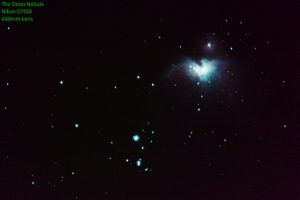For a couple of months, I was spending hours everyday, building space vessels and launching them into orbit and beyond. I was hooked and reading and watching everything I could find on astrophysics and space exploration.
So why did I quit, cold turkey? Like so many things, I reached a point of proficiency where to advance further, would require an additional investment.

With astrophotography, I struggled to get a descent photo of a nebula and in another season one of Andromeda galaxy. But I realized that I had reached the most that I could expect from my cludge of DSLR camera, telephoto lens and tripod for a telescope. To accomplish better pictures would require an investment in more hardware.
With Kerbal Space Program, I was not going to actually land on the surface of another moon or planet with a heavy upgrade in my mathematical understanding. The prospect of a deepdive into “rocket science” was not without its appeal — if I was younger.
So, I’ve left Kerbal and the space race behind, spending more time on projects that I might actually finish that might also be of value to others.
¯\_(?)_/¯
